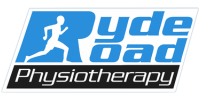KEEP YOU DRY AND CLEAN – by tightening around the sphincters of the bladder and bowel, the pelvic floor muscles help these sphincters to stay closed under load or pressure (cough,sneeze,lifting etc). If they can’t counteract the pressure then something has to give – and you will leak urine, wind or bowel contents.
SEXUAL SENSATION – the pelvic floor muscles play an integral role in orgasm for both men and women. The better your muscles, the better your orgasm sensation will be. This has a lot to do with not only muscle contractions but blood flow to the area.
PART OF THE CORE MUSCLE SYSTEM – also described as your internal muscle corset. Let’s look closer at this function as it goes a long way to helping you gain that flat tummy but safely and correctly. Your core muscles stabilise the spine and pelvis, providing support to allow the ‘moving’ muscles to do their job of moving you.
These CORE MUSCLES are like a corset or cylinder and are :
An effective CORE or CORSETTING action should happen automatically a split second before the moving muscles activate. Your brain is pre-programmed to do this but sometimes a bug or virus gets into the brain’s software (pregnancy, low back pain, repeated poor postures, straining on the loo – this list goes on) and this alters the way the program works from the brain. You start to compensate and use other muscles in an effort to replicate the original program and the brain becomes re-programmed. It is similar to someone limping by habit long after their ankle sprain has healed.
SO sometimes we have to re-train or re-program the brain to remember how to do a proper core contraction and make sure you do it PRIOR to and hold DURING any activity that creates pressure within the tummy – cough ,sneeze, lift, movements in exercise class/gym/pilates. Done correctly, it will soon become a muscle memory again and happen automatically.
